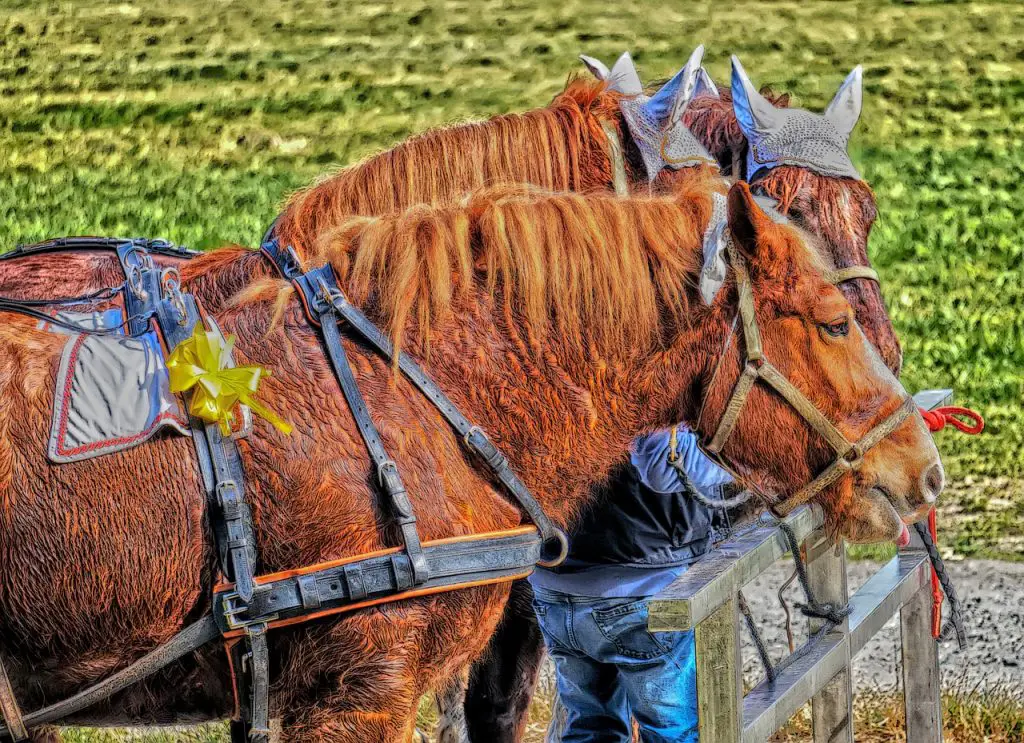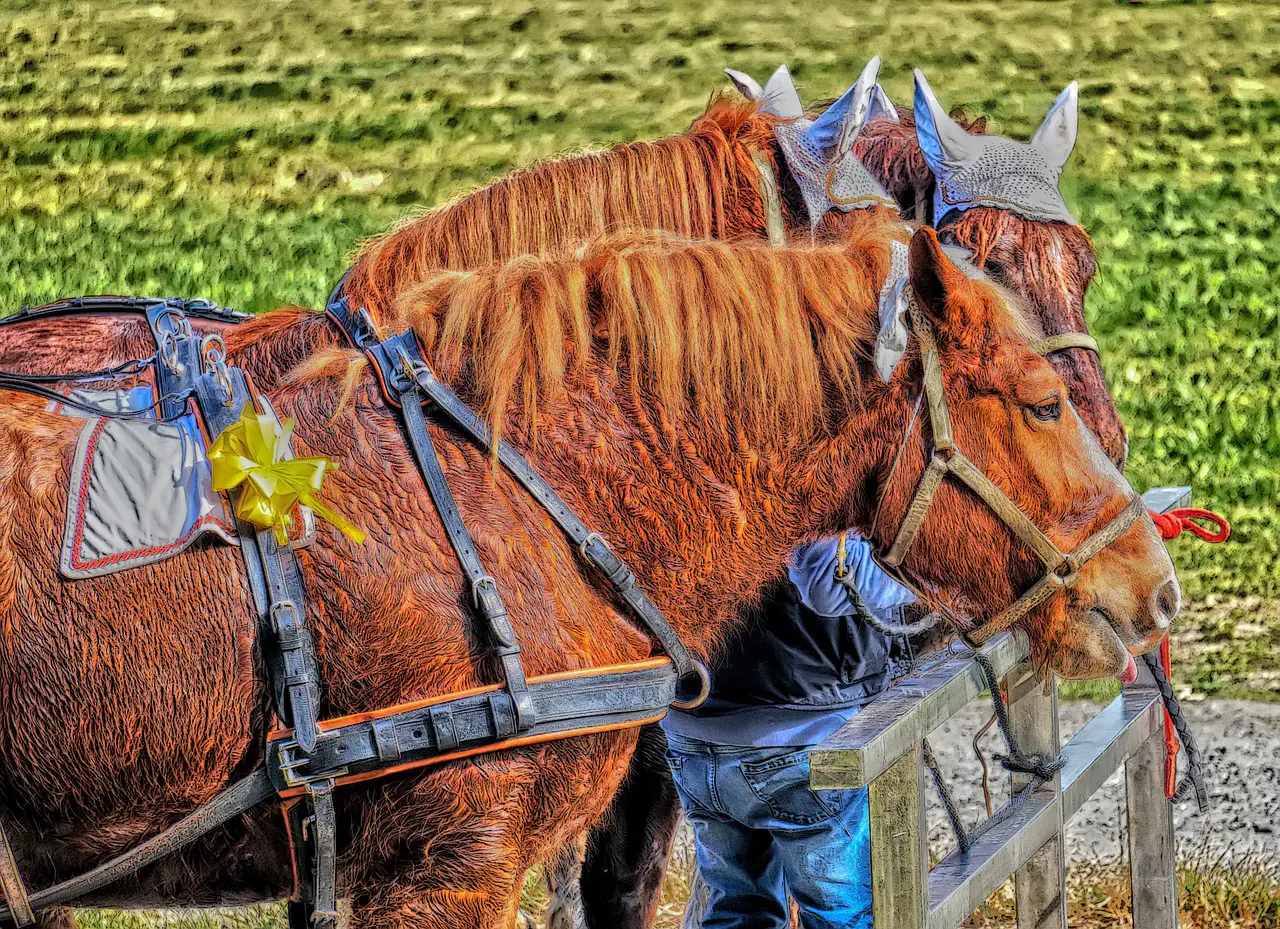Last Updated on April 15, 2022 by Allison Price
Introduction
Anhidrosis refers to a reduced ability to sweat when the body is heated. Horses and humans have both been known to experience an inability to sweat. It is most common in hot and humid climates like Florida and the other Gulf Coast states. This is a problem that is especially important for performance horses, as thermoregulation is primarily achieved by sweating. Between 65-70% of horse’s body heat is lost through the evaporation sweat. Humidity can also reduce the efficiency of sweat evaporation, and cool down the horse.
Anatomy & Physiology
Horse skin is densely packed with sweat glands (810 per cm 2), which exit to the skin at a hair-follicle. The glands are tubular and coiled, with a high blood supply. Numerous nerves can be found close to them. There are many components to sweat, including electrolytes, proteins and large amounts of water. Proteins found in sweat include glycoproteins, surfactants, and skin defense proteins. The concentrations of electrolytes (including potassium, sodium, and chloride), are higher than those found in blood, especially potassium.
Anhidrosis can be caused by a variety of syndromes, including hypothyroidism and low levels of chloride or abnormally high epinephrine. All of these associations are not satisfactory, except for the consistent finding of a decreased urinary fractional chloride excretion.

Chronic anhidrosis causes sweat gland atrophy. These abnormalities are not present in acutely affected horses. This suggests a role of long-term downregulation beta2 adrenergic glands. Recent research has shown that the use of macrolide antibiotics to treat Rhodococcus infections (in foals) can stop sweat production. This suggests that anhidrotic horses may have reduced chloride transport across their sweat gland cells as a result of macrolides. This is an early discovery and is currently being investigated.
Prevalence
Researchers have not found any predisposition to anhidrosis based on age, gender or color. Foals raised in hot and humid climates are not protected. Imported as well as locally-bred horses could be affected. Although epidemiologic studies suggest a prevalence between 2 and 6 percent of horses, the exact prevalence will vary depending on climate and quality of the studies. A recent study on non-racetrack Florida farms found that 1.8% of horses were anhidrotic, and 11.2% reported at least one case.
Diagnosis
Anhidrosis is often diagnosed presumptively based on the appropriate clinical signs and examination of a veterinarian. Patients with anhidrosis often have increased respirations and a failure to cool down after exercise. Anhidrotic horses won’t sweat in situations that require a lot of sweating. Some areas might still sweat, which could be confusing. Horses can develop dry flaky skin, especially on the forehead, and fatigue. If the diagnosis is not clear or treatment options are unclear, confirmation testing can be done using intradermal injections with terbutaline or epinephrine.
Treatment
Anhidrosis can be treated by moving horses to cooler climates. This helps to manage high body temperatures. Horses also start to sweat if they are in a cooler climate. It is important that Florida’s non-sweaters are managed carefully to avoid high body temperatures. Horses can cool themselves off by getting into the water sources in their pastures, such as big water troughs or ponds. Make sure they have access to clean, cool water. They can be given electrolytes (“Lite salt”) as an adjunctive feed to maintain the proper electrolyte levels in their bodies.
Horse owners believe that feed supplements provide relief for their horses. However, this observation is based on anecdotal evidence and has not been supported by research. Other treatments are attempted with minimal evidence, including oral supplementation with dark beer, salts, vitamins/electrolytes or thyroid supplementation. These are generally not considered dangerous and do not seem to increase the animal’s sweating ability. There have been some medical treatments with ACTH, alpha-2 antagonists, prostaglandins(Lutalyse), antihistamines, and Methyldopa [Aldo-Met]), but these have all been unsuccessful.
Recent research at the University of Florida showed that acupuncture as well as herbal medication could improve sweating in horses who were recently anhidrotic. However, the effect lasted less then four weeks after stopping treatment. Further research is needed to confirm the effectiveness of this treatment. The results from that study were very inconsistent.
Conclusion
Anhidrosis can be a serious condition that affects horses in Florida and the Southeast US. Many horses with anhidrosis are unable to live in Florida and cannot compete as successful competition horses. Further research is required to identify the exact cause of anhidrosis. This will allow for the development of effective treatments.



